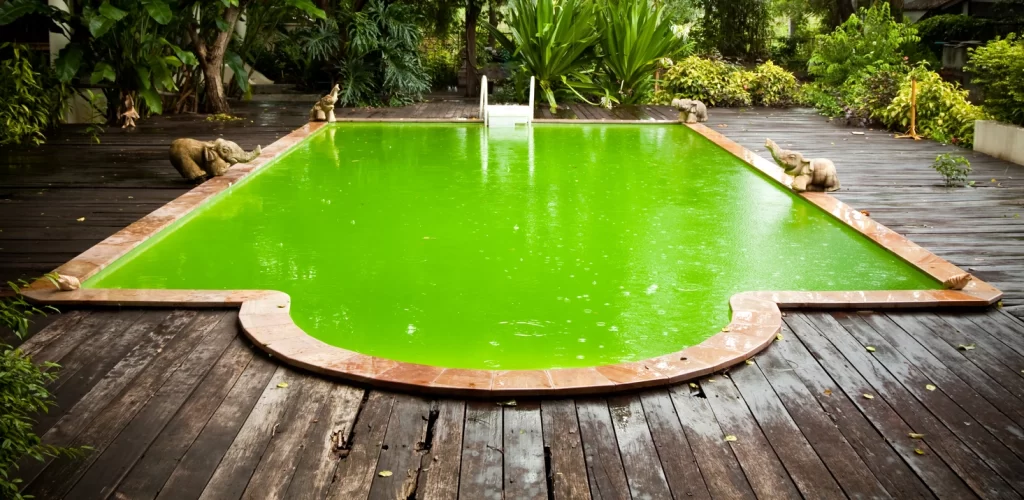There are a number of steps you can take to remove pool algae. The first step is to shock the pool with a stronger concentration of chlorine than it is currently containing. You may need to repeat this process two or three times, and if you do not complete these steps completely, the algae will return. You should also clean the pool regularly to avoid future visits from these unsightly organisms. Listed below are some tips for getting rid of pool algae and how to prevent its recurrence.
The most common type of algae is green. It may be free-floating or adhere to the walls of the pool. Regardless of its form, green algae reduces the clarity of water. This algae color is caused by severe copper precipitation. This algae will appear as “spots” or “sheets” on the surface of the pool. If left untreated, green algae can cover the entire pool. Fortunately, it is easy to remove the algae and prevent its regrowth.
Another important step in keeping your pool algae-free is to check your chlorine levels. While algae may not cause any immediate health problems, bacteria that feed on them may be. By keeping your water clean and chlorinated, you can stop the growth of this algae. This will help prevent the spread of harmful bacteria in the pool. It will also reduce the number of bacteria that live in the water. A good chlorine reading will kill off algae and prevent them from reproducing.
There are two main types of algae and these can be treated by using the right products. One type of algae is a green one, which exploits the failure of the chlorine sanitizing system and takes advantage of the opportunity to grow. When heavy rainstorms hit, green algae problems typically start because of the presence of nitrogen in the pool, which destroys chlorine residues. The next step is a copper-free algaecide.
As previously mentioned, preventing algae blooms is the most important step you can take to keep your pool clean and clear. The process of preventing an algae bloom can be expensive and time-consuming, so you should take preventative measures as well as chemical maintenance to ensure that your pool remains algae-free. As long as you follow these steps, you will be able to enjoy your swimming pool for many years to come. And you’ll be glad you did!
As a general rule, you should keep your water sanitizer levels at the proper level to prevent algae from growing. Additionally, you should keep the water chemistry in the pool balanced by testing the pH levels. Proper balance between the two will keep your pool clear of algae. The best way to treat algae is to make it a monthly affair. In case you do not have the time, consider hiring a professional to do the work for you.
You can also brush the water regularly to dislodge algae from the water’s surface. Vacuuming and brushing the pool will help remove most algae blooms, but it is important to remove any remaining algae, which will reattach to the finish. Proper circulation and filtration are also essential in preventing algae blooms. You should regularly inspect the swimming pool for algae and keep it clean to avoid any possible issues. You should also be sure to check the area that is less visible, because algae can also affect the filtration and circulation of the water.


